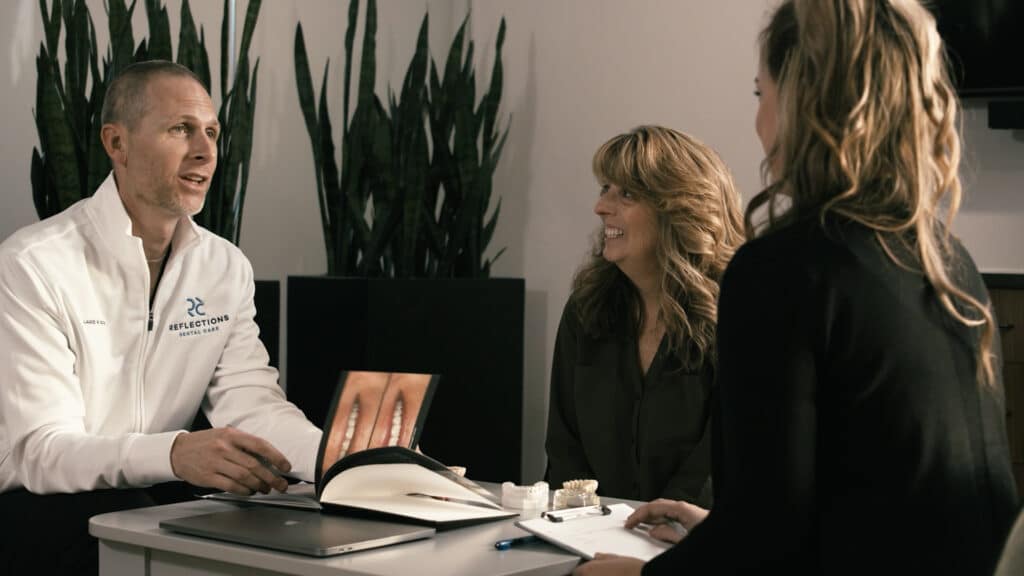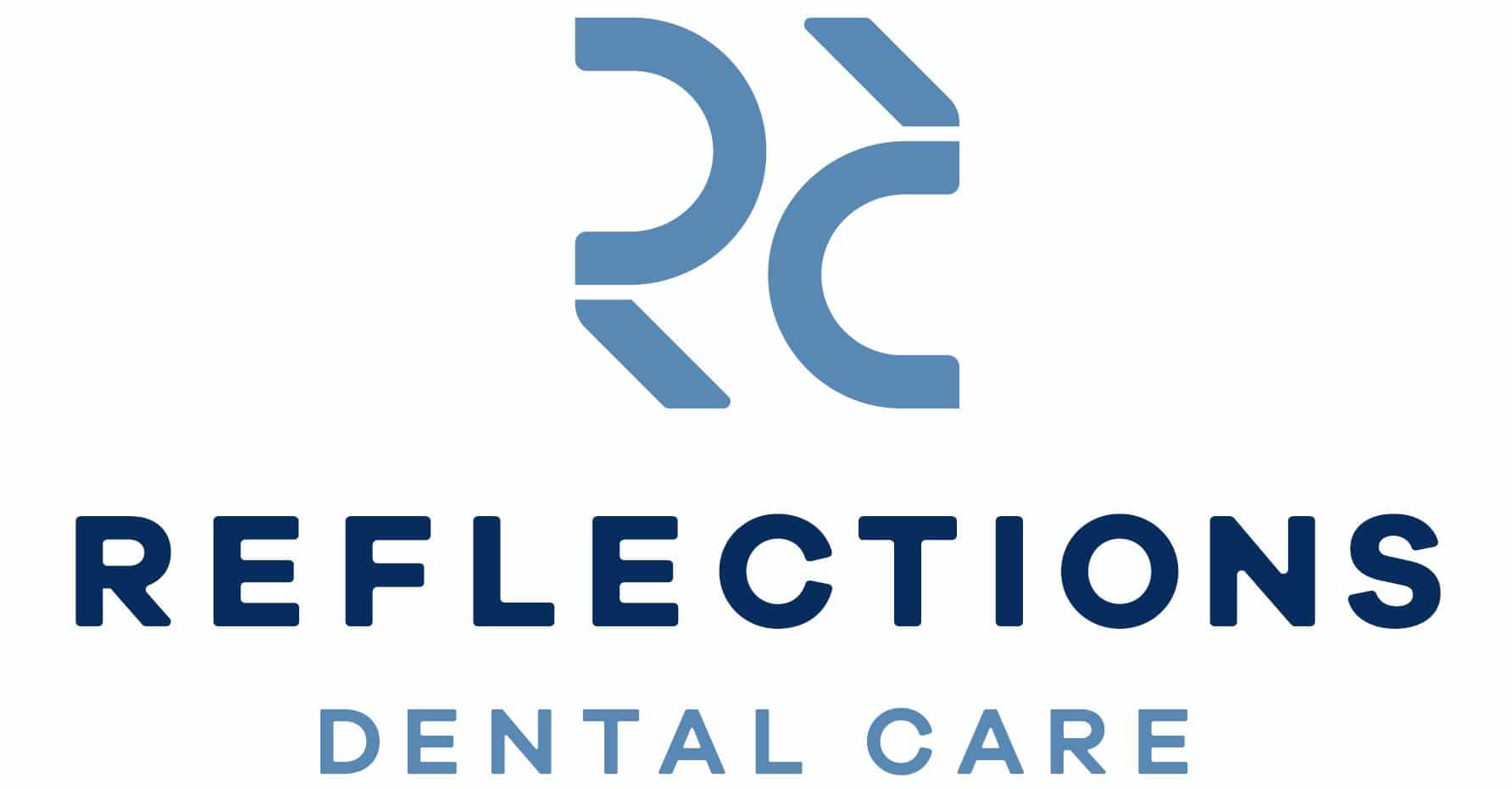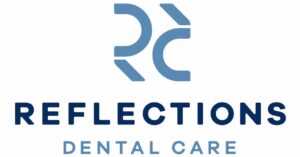Dental Implants & Implant Dentistry in Oklahoma City
Dental implants in Oklahoma city are restorative appliances that utilize innovative connecting pieces and technology to permanently restore your smile. These pieces include a titanium post, abutment, and dental crown. When you visit our dentist in OKC for your implants, not only will you receive a custom-made crown but you’ll also receive a custom-made abutment; we’ll tell you more about this further down the page! Overall, implants are a miracle of modern dentistry that we are pleased to provide to you. If you are interested in OKC dental implants to restore your missing teeth, please contact our office today!
The Implant Process
Before we get started planning your implant, we will first need to conduct a thorough examination of your teeth, gums, and jawbone. To do this, we will utilize our visual skills and CBCT scanner. Preliminary treatments may include the extraction of a tooth, restoring density to the jawbone, or treatment of gum disease.
Once any preliminary treatments are complete and out of the way, we will then begin the procedure by surgically placing the implant post. The implant post acts as a substitution for the tooth root; it is placed into the jawbone to anchor the remaining portion of the prosthetic in place and hold it stable. This implant post is made to last a lifetime and can easily withstand the regular chewing, biting, and speaking process, just as a regular tooth root.
After waiting a period of 12 weeks for the jawbone to heal and the implant to begin fusing to the bone, we can finally create the abutment. Our abutments are custom made to fit the individual patient by matching the precise size and shape of the tooth socket to simulate the appearance that the crown is emerging from the gum tissue rather than just sitting above it. We will take an impression of the implant site to ensure the custom abutment is perfect; this will be created in a lab and we will be ready to place it within one month. The abutment acts as a connection between the implant post and the dental crown, joining all pieces to create the full restoration.
Once we finally receive the abutment, it will be time to place this piece, as well as the crown. First, the abutment will be connected to the post. Once this is in place, we will have your custom-made crown developed by our CEREC machine. Within the hour, this final piece will either be cemented or screwed into place. This finalizes the entire dental implant and brings you a near-perfect new smile.
The process of planning and placing implants is one of our favorite things to do at Reflections Dental Care. We find joy in seeing how excited patients get when becoming familiar with their new smiles, and we also appreciate the unique technical aspects involved in each procedure. Just as every patient has a different smile, the process of placing their implants is also different! This may be due to the natural anatomy of their jawbone, the number of teeth they are missing, or the necessity for preliminary procedures. Below you will find an overview of what the process typically involves!

The Benefits of Dental Implants in oklahoma city
Dental implants are the closest thing you can find to an actual tooth. They do more than just restore appearance and function; they also improve the health of your jawbone and surrounding teeth. The implant post provides healthy stimulation to your jawbone, encouraging continuous growth, strength, and regeneration of supporting ligaments and bone tissue—something dentures or bridges simply aren’t capable of. Additionally, the implant helps keep surrounding teeth firmly in place, preventing them from shifting out of their sockets and becoming loose. Other benefits of choosing dental implants with a dentist in Oklahoma City include enhanced comfort, durability, and long-term oral health improvements.
- Improved appearance
- Restore chewing
- Easy maintenance
How Much Do Dental Implants Cost in Oklahoma City?
We know you’re probably excited about the idea of planning and placing your new implant, but a common question we come across is regarding the cost of the dental implant procedure. Unfortunately, we are not able to determine an exact cost for you due to the numerous factors that may impact expense. To determine an accurate estimate for you, we can provide you with this information after examining your mouth for preliminary treatment needs.


Are Dental Implants Right for you?
Dental implants in OKC are incredible appliances, capable of withstanding much of the daily forces we utilize our natural teeth for every day. They are truly extraordinary and they make a great impact on the lives of our patients. But are they right for you?
Recommended Reading:-
Interested in finding out more? Call our office today!
Sedation Dentistry
Your comfort is our priority at Reflections Dental Care, where we offer dental sedation to any patient upon request.
Everyone Welcome
Whether you're here for routine service or it's been a while, we welcome you with a smile, kindness, and understanding.
Team Work
Our team members work together to deliver the high level of care and top-notch service you need at the dentist’s office!
What People Are Saying



Dental Implants FAQs
Dental implants are designed to provide a permanent solution for missing teeth. With proper care and maintenance, dental implants can last a lifetime. However, it is important to keep in mind that individual results may vary and some need a replacement after 20-30 years.
It is very difficult to tell if someone has dental implants. The implant itself is titanium screws that are placed inside the jawbone and covered with a restoration. The restorations can be made to match your natural teeth, making it difficult for other people to recognize that you have implants.
Dental implants are a form of restorative dentistry, so it is best to seek out an experienced prosthodontist or another specialist for this type of procedure. These specialists have received advanced training in implant placement and can provide a high level of care for the patient. Why not contact Reflections Dental Care for help today?
Your dental implants are designed to last a lifetime, but they can still be damaged by certain foods. Hard and crunchy foods, such as nuts and ice, can put undue stress on the implant or cause it to become loose. Don't worry, your specialist will talk to you about the foods to avoid and how to exercise caution when eating.
Generally, dental implants are designed to last. With proper care and regular follow-up visits, the average lifespan of an implant can exceed 20 years. As mentioned, implants last much longer with proper home care and professional maintenance.
Infection is the most common cause of dental implant failure. If an infection develops around the implant, it can damage or destroy the implant if left untreated. Other potential causes of implant failure can include inadequate osseointegration of the implant, lack of proper occlusion, and trauma.
It is generally not recommended to have dental implants if you suffer from gum disease. This is because the infection can spread to the implant, causing it to fail. It is important to treat gum disease before having any dental implants placed so that the implant has the best possible chance of success. Speak to us at 405-751-4556 to discuss a potential treatment plan.
The amount of time needed to wait before placing a dental implant after extraction depends on the specific case. Generally, it is best to allow four to six months for the area to heal before placing a dental implant. During this time, it is important to ensure that you practice good oral hygiene.
There are several options for people who cannot afford the full cost of dental implants. Many insurance providers offer coverage for some or all of the cost. Additionally, some dental practices will offer payment plans to help spread the cost of treatment over a period of time.

